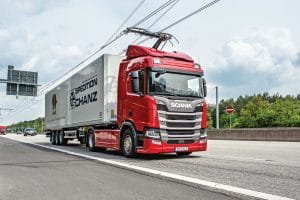 Seven more Scania R450s are being supplied to the German e-highway project, Elisa.
Seven more Scania R450s are being supplied to the German e-highway project, Elisa.
Story by Bhushan Mhapralkar
Scania will deliver seven more R450 Hybrid Heavy Goods Vehicles (HGVs) to the German e-highway that became fully operational on Autobahn A5, south of Frankfurt, late last year. The seven Scania R450 HGVs with pantographs fitted on top of them all will add to the already five such vehicles plying on the e-highways stretch measuring five-kilometers in length. As part of an effort of the European Union and the countries within to reduce vehicular greenhouse gases 80 to 95 per cent by 2050, the e-highway project, termed as Elisa (for electrified, innovative heavy traffic on the Autobahn), began taking shape in late 2017 with the involvement of Volkswagen Group and Siemens among others. Driven by the fact that shifting freight transport to rail has its limitations, the Elisa e-highway project attempts to look at long-haul heavy duty trucks especially, in a different light. It looks at the share of road transport in the form of trucks combining reliable service with minimum environmental impact. The e-highway system is thus being evaluated under the premise that it is twice as efficient as conventional internal combustion engines.
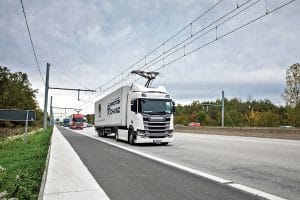
With Siemens Mobility innovation supplying the Scania trucks with power from an overhead contact line laid over a distance of five-kilometers across both the sides – one facing Frankfurt and one facing Darmstadt, the Elisa project is showing high potential to reduce air pollution and contribute significantly to the decarbonization of the transport sector. Functioning such that a Scania R450 tractor-trailer in the lane right-most lane marked for HGVs and under the overhead power lines, a sensor in the vehicle detects the lines and emits a signal. This prompts the driver to press the button to allow the pantograph fitted on the roof of his cab to rise. It connects to the overhead lines and the truck turns electric with nary a sound to produce. If the internal combustion engine was running (a hybrid truck uses a smaller displacement internal combustion engine to part-propel the vehicles either by directly supplying power to the wheels or by charging the battery, which then gets the electric motor to turn the road wheels), it shuts down. Instead, the electric motor begins to power the truck.
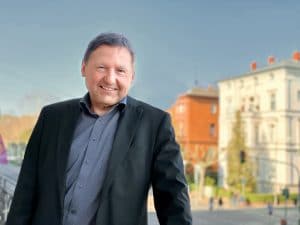
With work to double the length of the e-highway to 10 km with the supply of additional Scania R450 hybrid HGVs by the Volkswagen Group (Scania is a Volkswagen Group company) set to be complete by 2022, the Elisa project is providing much data and information to the stakeholders. The best part of the project perhaps is its functioning on a ‘real’ expressway – the famous Autobahn of Germany and not some highway that is called an expressway because a certain minister or government authority would like it to be called such. Evaluating whether such overhead power line trucks could be a viable alternative to road freight transport, the Elisa project, supported by the German Federal Ministry for the Environment, has been put in place with an investment of Euro 15 million. Its successful operation thus far has encouraged the undertaking of two more e-highway test sections in Baden-Württemberg and Schleswig-Holstein. Of the opinion that overhead contact line roads make one of the several promising technologies that can help freight transport on roads to a sustainable future, Claes Erixon, Executive Vice President for Research and Development, Scania, mentioned that his company, like its sister brands MAN Truck & Bus, is also pursuing other, more direct ways to make traffic as green as possible. ““Vehicle electrification is developing quickly and with its environmental, social and cost benefits, it will play an important role in the shift to a fossil-free transport system,” he added.
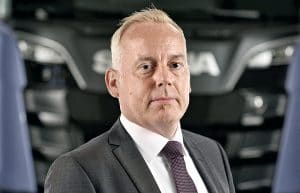
Headed by Hessen Mobil, the operation of electrically driven heavy CVs using energy supply by overhead catenary in real traffic and on a public road in Germany for the first time is made special by the integration of climate-friendly technologies into the system network of cooperative automated transport, which would enable the traffic of the future to be made more environmentally friendly, safe and efficient. Expressed Gerd Riegelhuth, President, Hessen Mobil, that his company has been developing and testing solutions for the mobility of the future for many years in the Rhine-Main area, Germany’s transport hub, with long-term experience in carrying out major projects for the development, testing and introduction of innovative transport technologies. The Elisa project, he added, marked a logical step for Hessen Mobil to make an important contribution to the vision of largely emission-free road freight transport.
Made interesting by the fact that if the HGV in the far-right lane wants to overtake another HGV in front and thus pulls into the over taking lane, the pantograph lowers itself. After the overtaking manoeuvre is complete and the HGV moves back into the lane with overhead wires the pantograph rises again. The view of the pantograph is available in the LCD screen on the dashboard of the truck for the driver to see. Enabling the hybrid, battery powered HGV to run on electricity as well as top-up its battery over the five-kilometer stretch until it moves away from the Autobahn or continues beyond, the Elisa project, being managed out of the Hesse control centre, draw power from renewable sources in the form of solar panels situated not very far from the Autobahn. Highlighting a unique solution to the question of how does electricity get into the truck, the Elisa project, said Riegelhuth, is about the wise use of energy since it is valuable. He drew attention to a Federal Ministry of Transport and Infrastructure, Germany, report, which estimates that truck traffic will increase 38 per cent by 2030 as compared to 2010. The interim target of the German Federal Government being to reduce CO2 emission 94 metric-tonnes in the the transport sector by 2030, a reduction of 45 per cent, the Elisa project is made important by the fact that the power required per 100 kilometres for electrically powered vehicles is up to 90 per cent lower than for combustion engines and 50 per cent lower than for fuel cells.
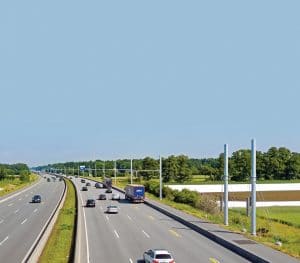
Though not the first project of its kind in Europe – the first project is said to have come up in Sweden some two years prior to this one, the Elisa project is made important by the fact that it is situated in the densely populated Rhine-Main area close to Frankfurt Airport, and the ‘Frankfurter Kreuz’ motorway junction provides optimal test conditions. It is an eight-lane motorway with a passage of 134,000 vehicles per day. The share of heavy goods traffic is approximately 10 per cent. The operational environment made challenging by its high public visibility, the Elisa project is helping the transferability of the research results to further sections of the motorway. Such is the location of the test track with regard to its potential to handle as many journeys as possible within existing transport networks, that it is throwing open new possibilities of transport companies using catenary trucks in their everyday business. Many more transport companies have shown interest in participating in the test operation than there are catenary trucks available, according to Scania sources. Said Riegelhuth, “Compared with fuel cell concepts, the direct use of electric power is by far the most efficient in the transport sector. For electricity-based liquid fuels (called ‘power-to-liquid’ or ‘e-fuels’) the conversion losses are higher. This is also reflected in the system costs.” “In the long run, RES-electricity-based fuels should thus only be used for modes of transport for which electrification in the foreseeable future is unrealistic (air and shipping traffic),” he added.

Of the opinion that catenary trucks are a vital complement to rail transport, Riegelhuth averred that even today, 80 per cent of all freight transport is by truck and only eight-per cent is by rail. Stating that freight transport overall is increasing and requiring environmentally friendly drive solutions, he said that many regional truck transport operations like delivery of goods to supermarkets is not possible by rail. Expected to help develop financing or operator models, the Elisa project with the involvement of Scania as a Volkswagen Group entity, Siemens, Darmstadt Technical University, Hesse Mobil and others is turning heads. It is drawing attention of the world in terms of how it could shape the future of road transportation in real-world conditions, and anticipating the rise in density as well as in terms of behaviourial changes.

























